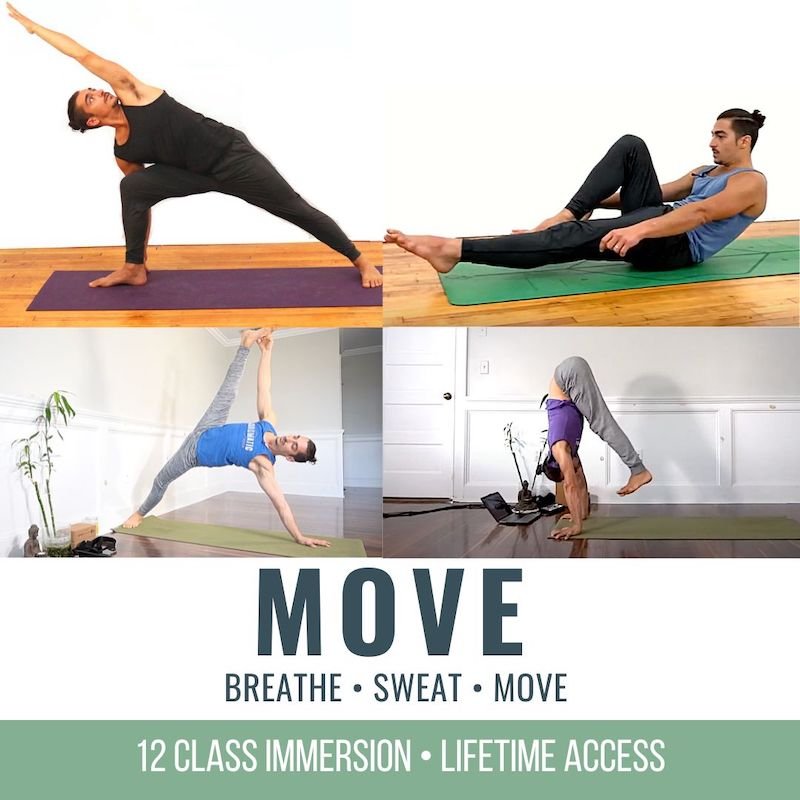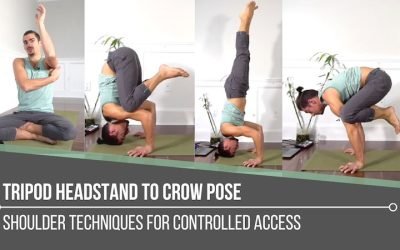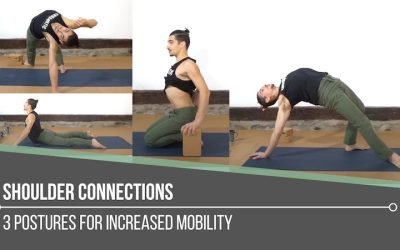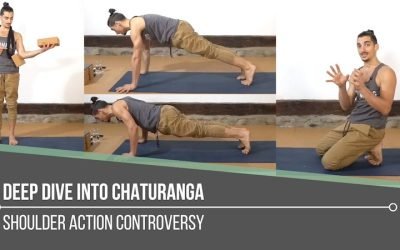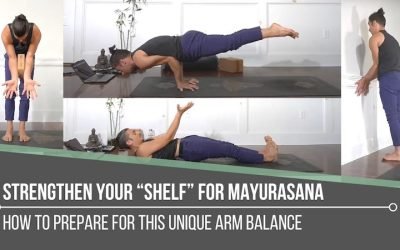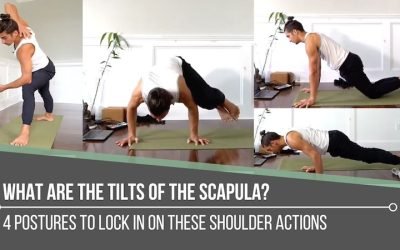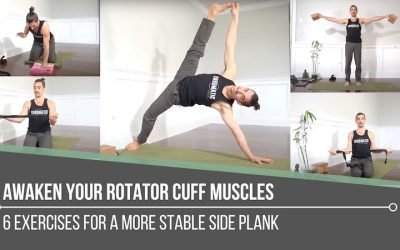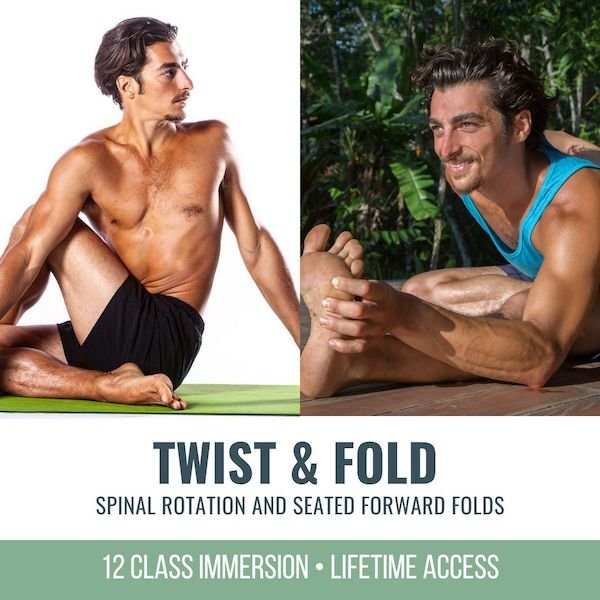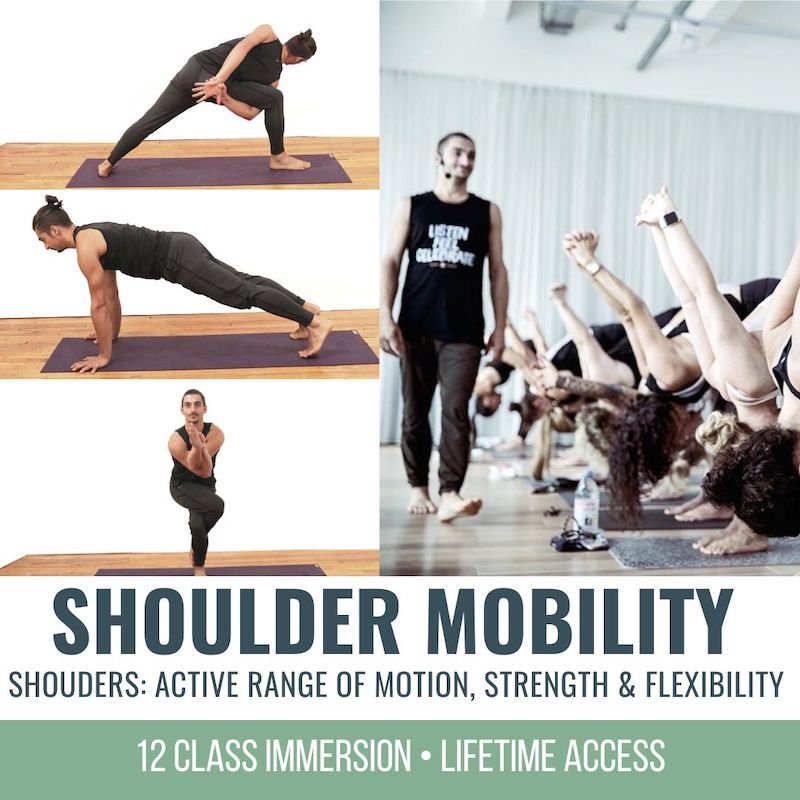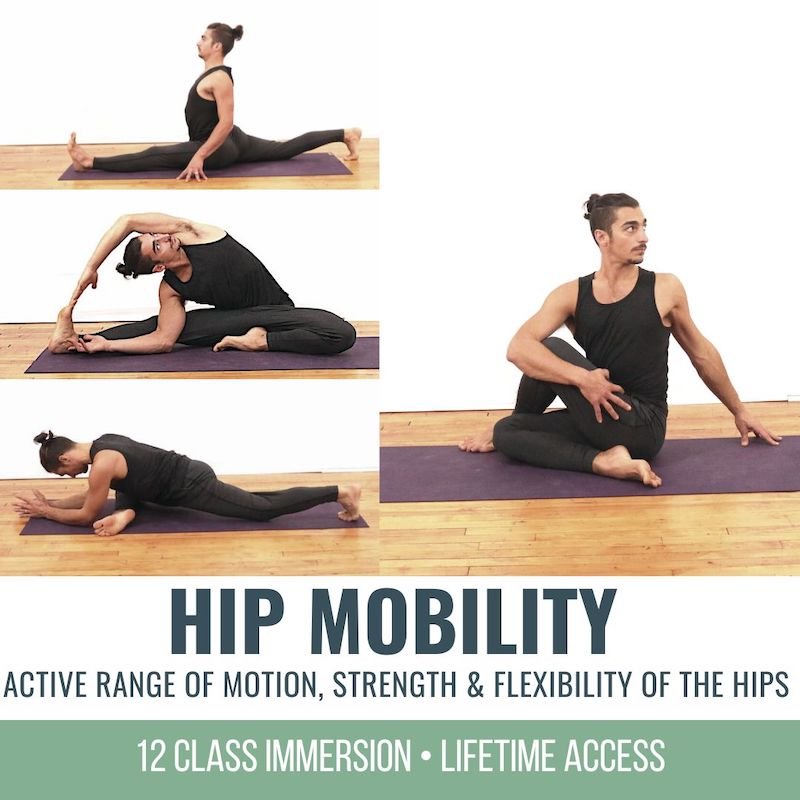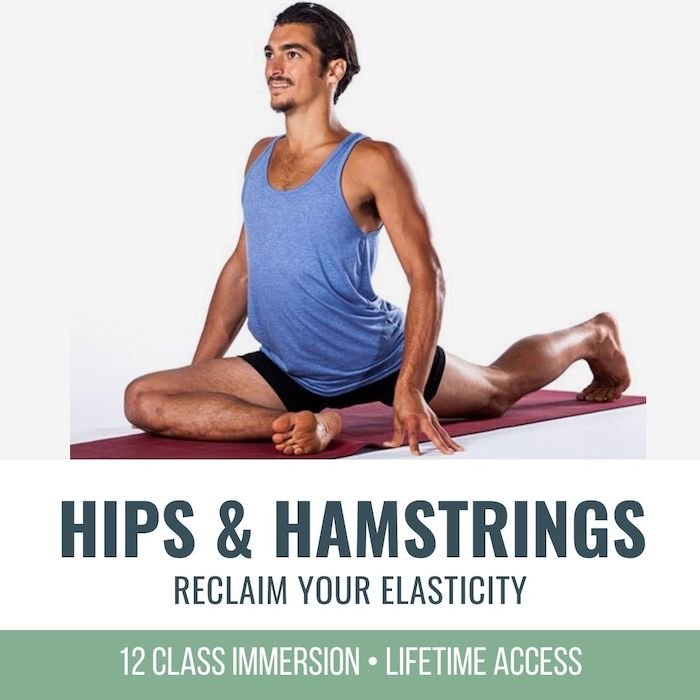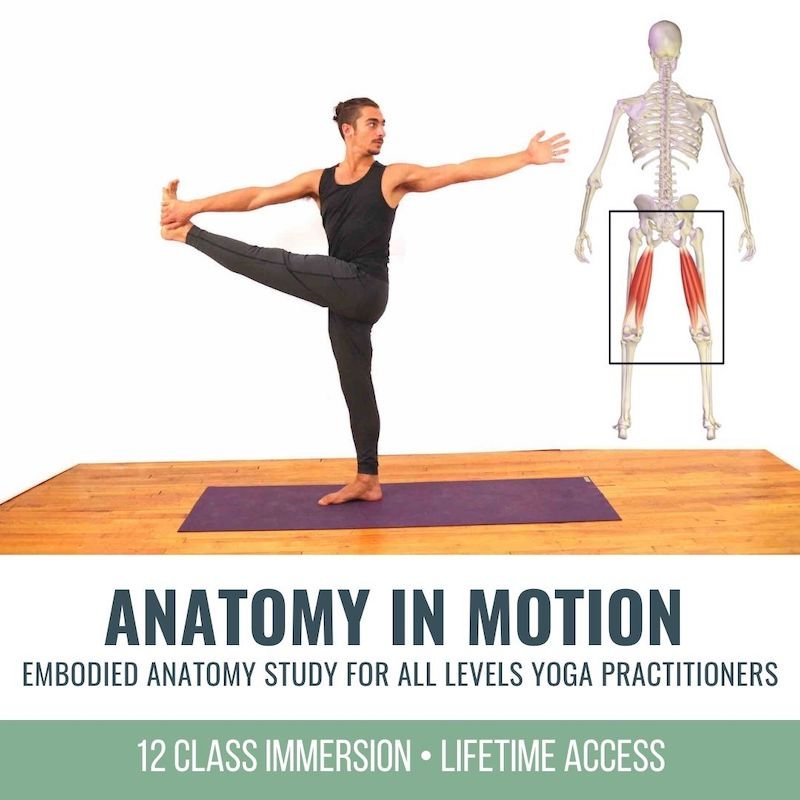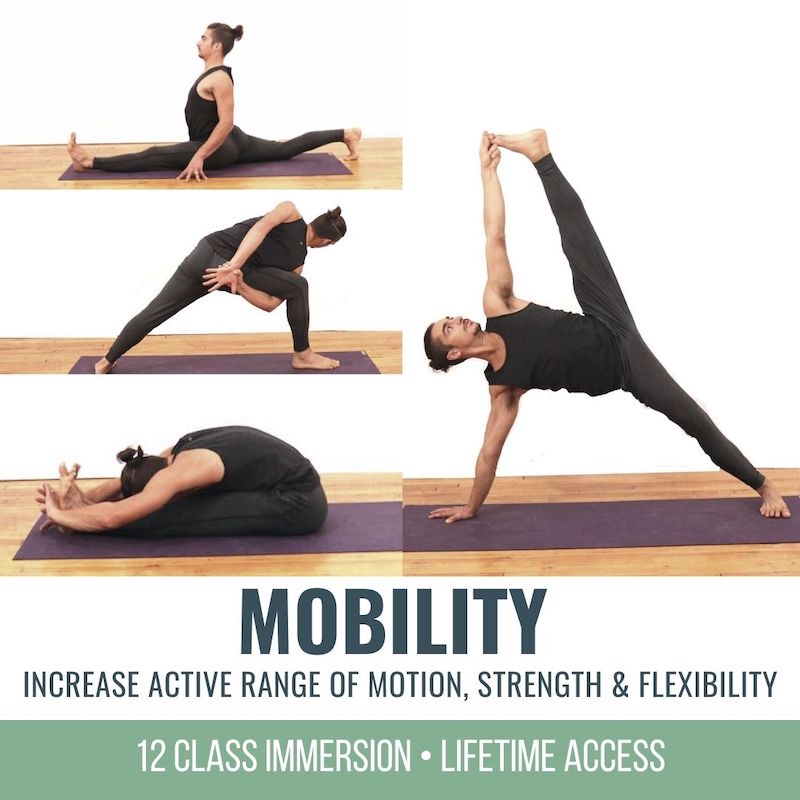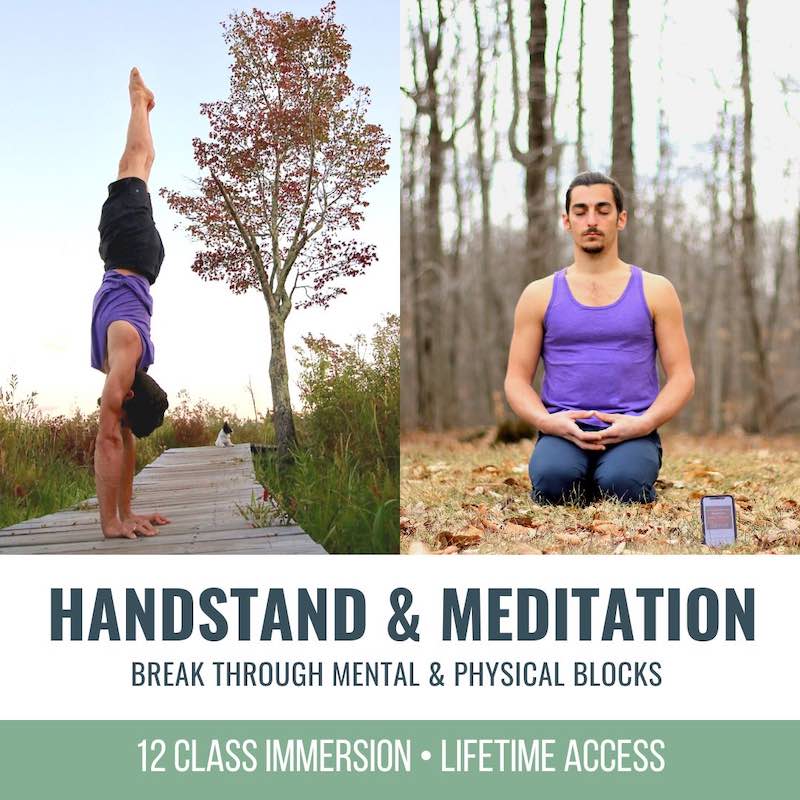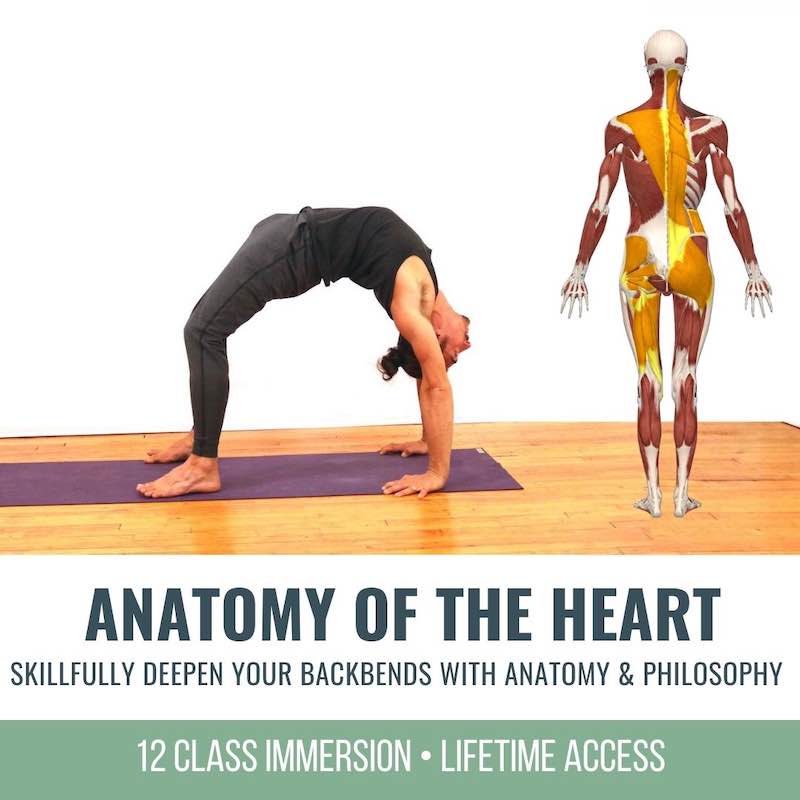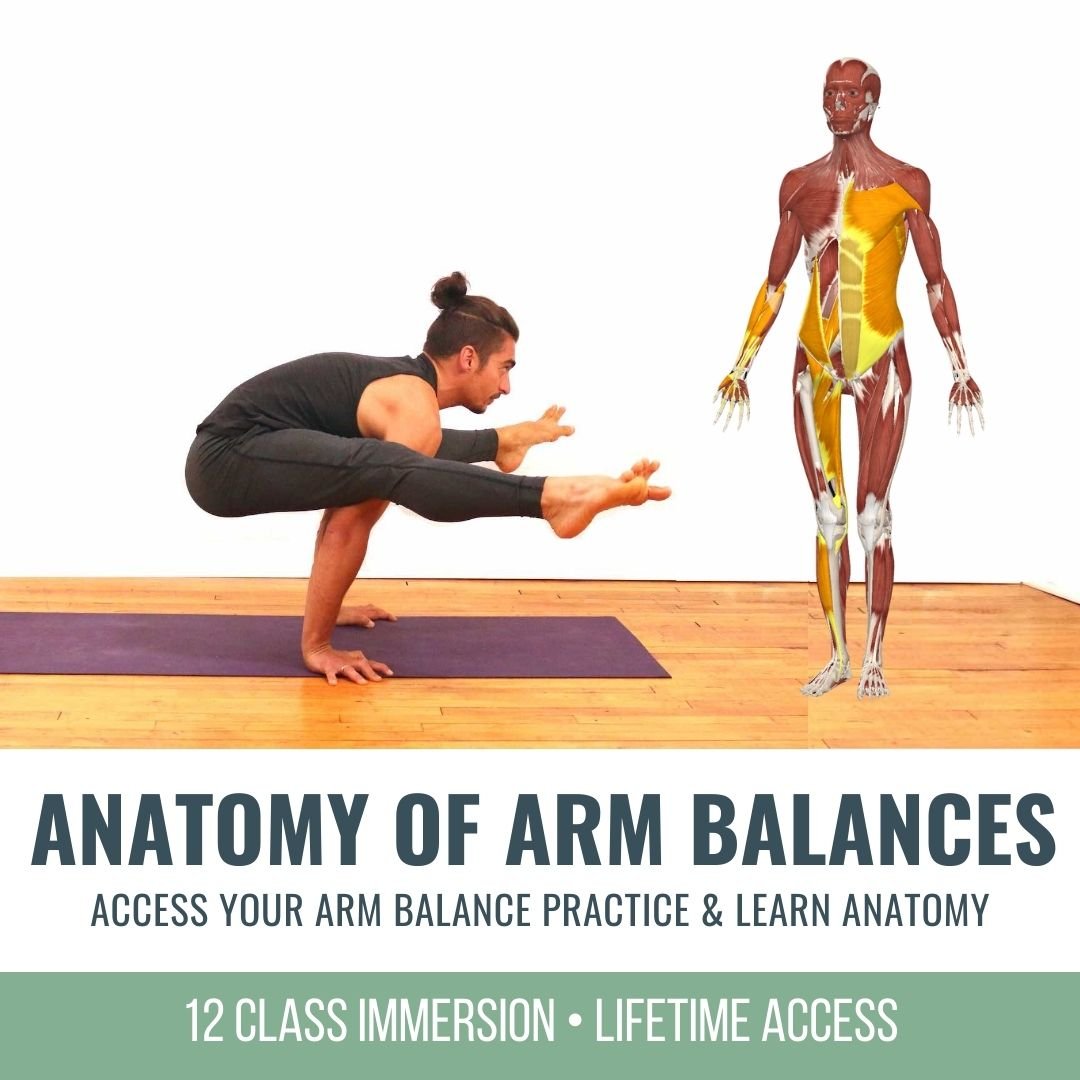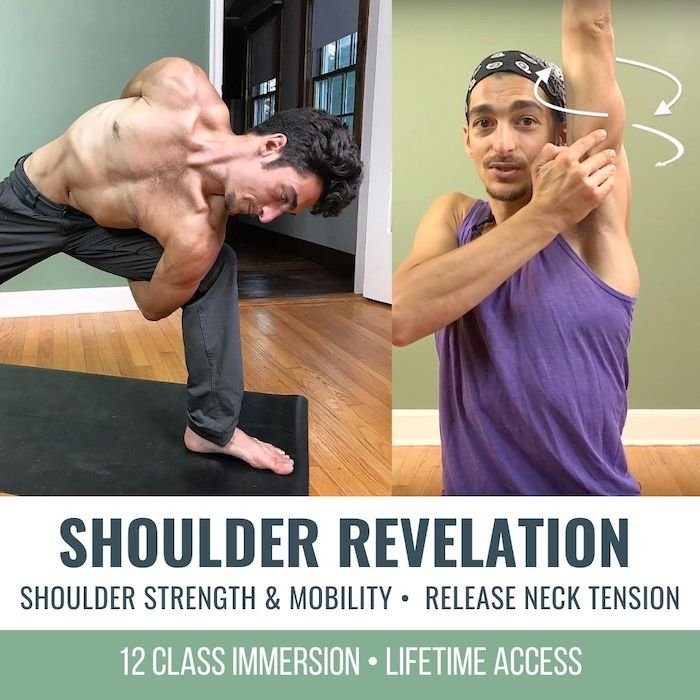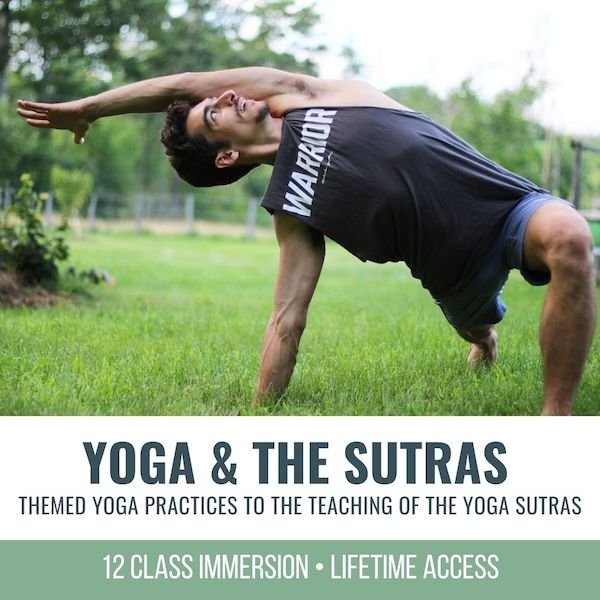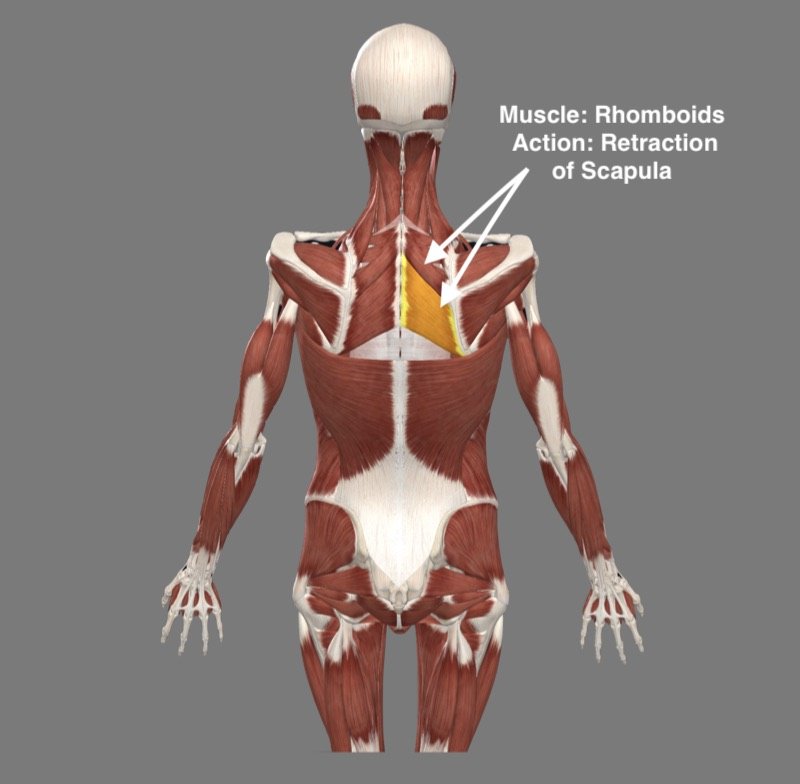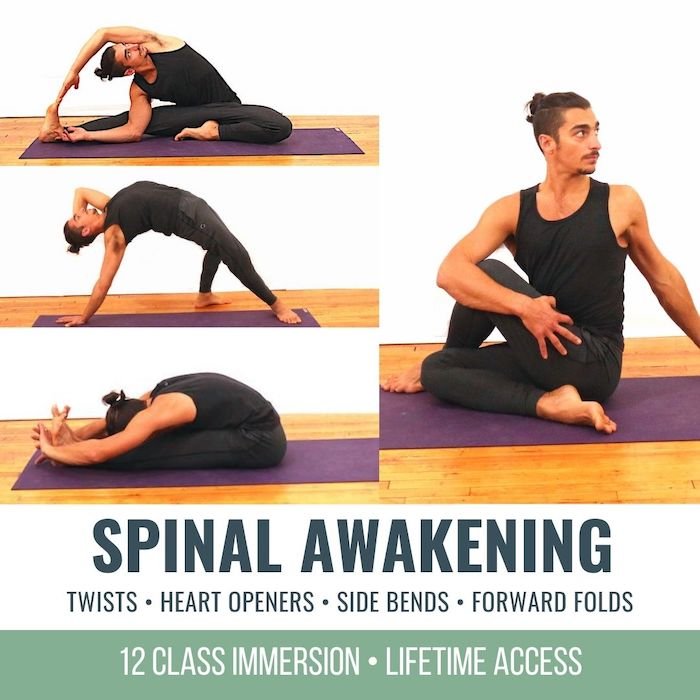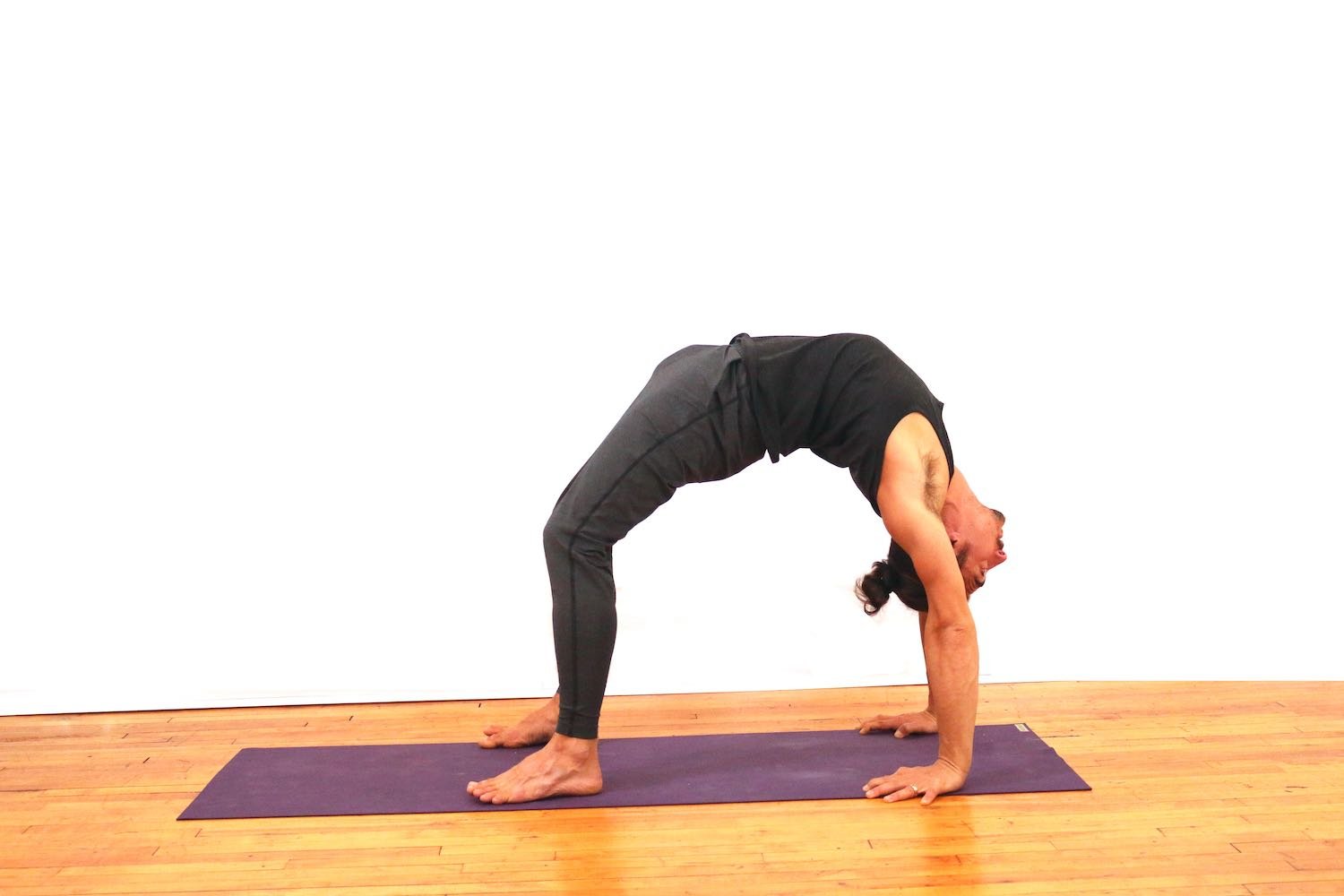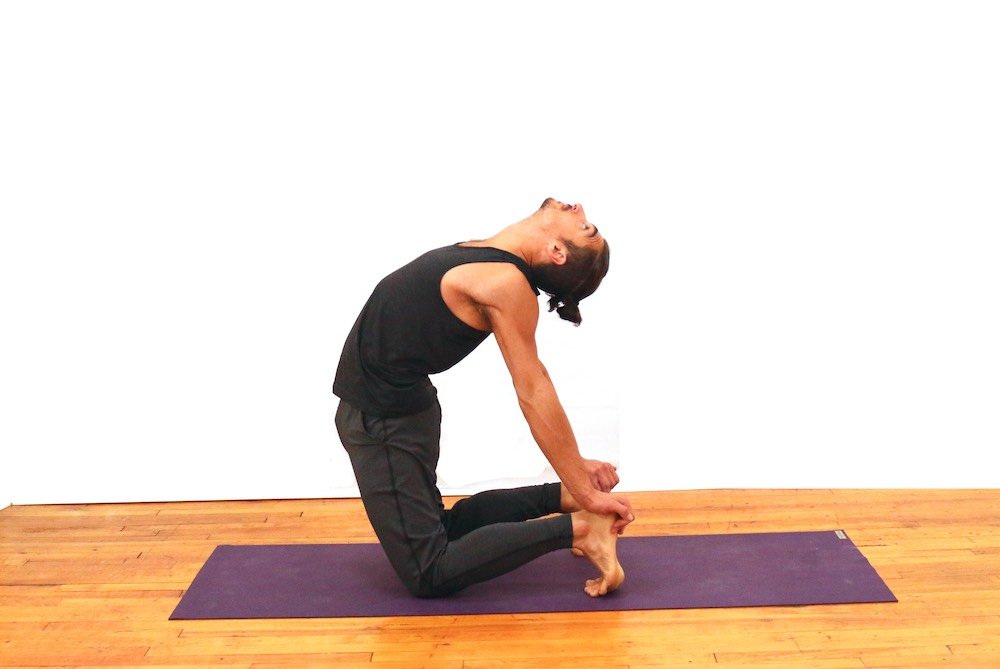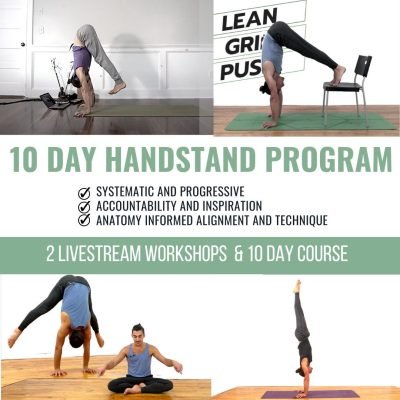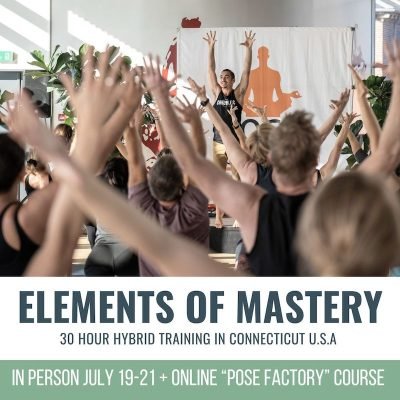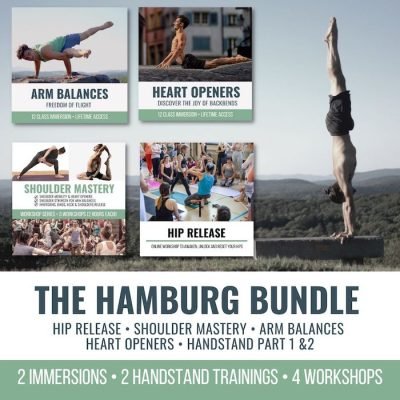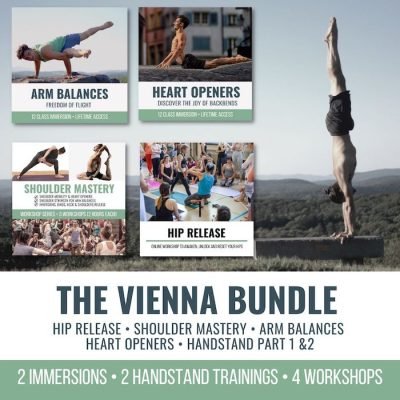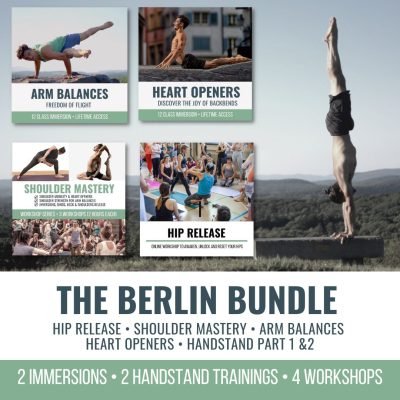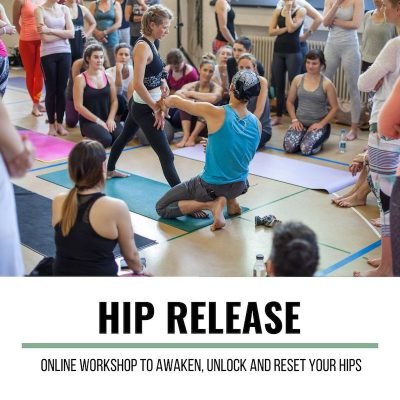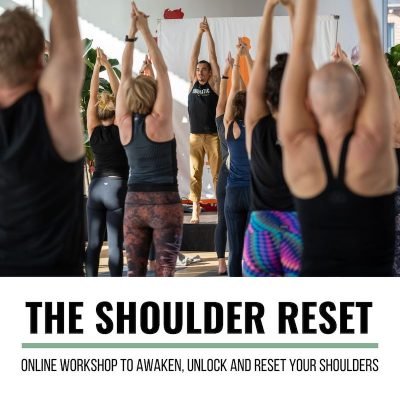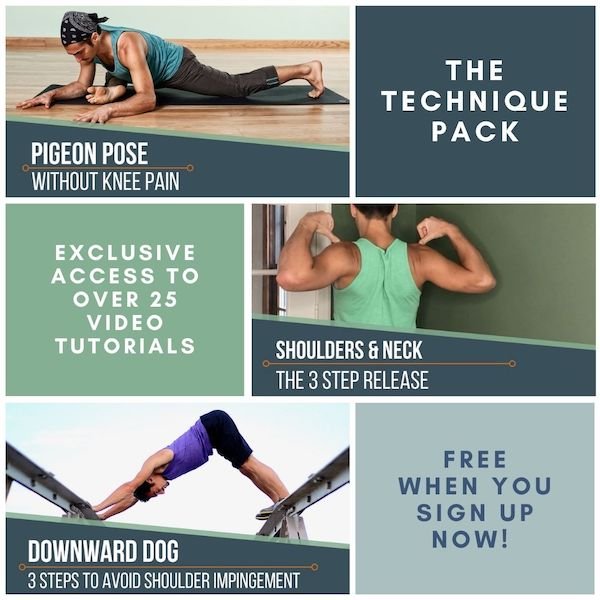Tripod Headstand to Crow for Controlled AccessinversionsTRIPOD HEADSTAND TO CROW POSE When exploring an inversion like Tripod Headstand, the shoulder muscles become part of the primary focus. Tripod Headstand on its own can be challenging enough, but adding a...
Smooth Seated Jump Throughs
Smooth Seated Jump Throughs
Skillful Transition Techniques Simplified
movement
SEATED JUMP THROUGHS
It’s true that seated jump throughs are an example of how to seamlessly create a link between two yoga postures, but they also provide a lot of information about how you move. It’s easy to find yourself more focused on the alignment, shape, and/or position of your body within a specific asana. This is not without good reason, because there is definitely a lot going on in a given posture, especially when you are considering when and how to create the appropriate muscle engagements in order to maximize the posture’s benefits. How you move and transition between each posture, however, also carries a great deal of weight within your yoga practice. In other words, what happens between each posture is extremely important. Moreover, your ability to control your body in order to maintain balance and safely move on your mat translates to how you move when you are off of the mat.
MOVE
- Access your movement potential
- Sweat and raise your heart rate
- Master your breath/movement coordination
- Increase mobility at all major joints
- Learn to gracefully transition between postures
- Improve your flexibility
- Strengthen your hips, back, shoulders, and core
- Improve your balance
- Each class will raise your heart rate, bring you to a sweat, and return you back to a relaxed state of mind and body
- 12 Classes: All levels appropriate
- Lifetime unlimited access to all
- Attend the livestream OR practice the replays any time that's convenient for you
$168.00
HOW ARE TRANSITIONS IN YOGA CONNECTED TO HEALTH?
Seated jump throughs are often used in Vinyasa- and Ashtanga-style practices to enter into seated postures more smoothly. Given the nature of these practices, which are more dynamic, this comes as no surprise. The pairing of movement with breath requires you to move with more “flow.” More vigorous practices like these provide benefits like increased strength or coordination and may even offer cardiovascular benefit. The benefits are not limited to the physical; these practices also improve cognitive function. Learning how to execute seated jump throughs offers much more than graceful ease on the mat.
WATCH THE VIDEO
SMOOTH SEATED JUMP THROUGHS: SKILLFUL TRANSITION TECHNIQUES SIMPLIFIED
MOVEMENT & CARDIOVASCULAR EXERCISE
Practicing a skill such as a seated jump through requires more sophisticated movement and repetition. Even if it is a “simple” transition for you, doing it repetitively throughout your practice will definitely build heat in your body and increase your heart rate. If seated jump through is a more ambitious endeavor, then practicing the skills Matt breaks down will both build heat and provide the cardiovascular benefit of this type of movement.
“It is widely accepted that regular physical activity is beneficial for cardiovascular health. Frequent exercise is robustly associated with a decrease in cardiovascular mortality as well as the risk of developing cardiovascular disease.”
When you watch the video, you’ll see the layering within the drills Matt offers. The effort involved in practicing the drills for the transition, along with this style of practice as a whole, will undoubtedly challenge you physically. Consistently practicing this way is the key to unlocking the benefits.
200 HOUR ONLINE TEACHER TRAINING
GET CERTIFIED & DEEPEN YOUR YOGA PRACTICE
- Deepen your yoga practice
- Build confidence speaking in front of groups in person and online
- Learn foundational class structures and templates
- Learn techniques for a wide range of yoga postures
- Get certified and highly qualified to teach yoga
- Yoga Alliance Globally Recognized Certification Program
- SPRING ENROLLMENT OPEN! Training begins June 1
MOVEMENT & COGNITIVE FUNCTION
The hippocampus is the part of the brain that is largely responsible for memory and learning. The researchers in this study “found the volume of the left hippocampus to be significantly greater among yoga-practitioners compared to age- and sex-matched controls with similar physical activity and fitness levels.”
The study finds that specifically asana has a significant impact in this area. Understanding this confirms the importance of movement and its impact on both the physical and the mental.
300 HOUR ONLINE TEACHER TRAINING
GET 500 HOUR CERTIFIED AS A MASTER TEACHER
Master your skill set as a teacher through refined techniques, anatomy, biomechanics, sequencing, philosophy, meditation techniques, theming, yoga business, and much more!
- Get 500 hour certified
- Learn anatomy, biomechanics, asana techniques
- Expand your teaching skills
- Masterful sequencing and verbal delivery
- Learn meditation and breathwork techniques
- Transformative tools: theming, dharma talks, satsang
- SPRING ENROLLMENT OPEN! Training begins June 1
SKILLFUL EXECUTION OF A SEATED JUMP THROUGH
As previously mentioned, Matt layers on each skill in order to make the practice of seated jump throughs more accessible.
In the video, you’ll see that Matt advises you to start from a “shortened Downward Dog” position, with hands wider than usual. From there, you’ll place one leg in front in order to cross at your shins as you glide your feet forward and then gently drop to a seated position. You have the option to then send both legs forward in order to start imprinting the full pattern of movement into your nervous system. In order to take the drill to the next step, you have the option to jump into the cross-legged seated position (important to note that you should land on the tops of your feet). This undoubtedly makes it more active (increasing your heart rate and the cardiovascular component). What is more, when you come to the tops of your feet, you’ll see how Matt demonstrates a play of buoyancy in the hips. This balance on your hands is also a great preparation for arm balances and for the strength required in the seated jump through when you start sending your legs forward with more fluidity.
Repeatedly practicing the skills required for seated jump throughs will only refine your movement and help you tap into the physical and mental benefits. There is so much more to uncover, as this only skims the surface.
Register for Matt’s next immersion, called Move, so that you may delve into your ability to move with ease and confidence on and off of the mat.
The 200 Hr. Teacher Training: Click Here to See the Next Start Date
The 300 Hr. Advanced Teacher Training: Click Here to See the Next Start Date
Article by Trish Curling
Video Extracted From: Vinyasa Immersion
MOVE
- Access your movement potential
- Sweat and raise your heart rate
- Master your breath/movement coordination
- Increase mobility at all major joints
- Learn to gracefully transition between postures
- Improve your flexibility
- Strengthen your hips, back, shoulders, and core
- Improve your balance
- Each class will raise your heart rate, bring you to a sweat, and return you back to a relaxed state of mind and body
- 12 Classes: All levels appropriate
- Lifetime unlimited access to all
- Attend the livestream OR practice the replays any time that's convenient for you
$168.00
Continue Learning
Tripod Headstand To Crow Pose
Shoulder Connections
Shoulder Connections 3 Postures for Increased Mobilityshoulder stabilitySHOULDER CONNECTIONS To increase mobility in our shoulders, we must first understand how they move, so we become more connected with their function and how they inform a variety of yoga postures....
Deep Dive Into Chaturanga
Deep Dive Into Chaturanga Shoulder Action Controversyshoulder stabilityDEEP DIVE INTO CHATURANGA Earlier this week, Matt posted a video on his Instagram page highlighting the shoulder blade movement that takes place in Chaturanga—moving from protraction to retraction....
Strengthen Your “Shelf” For Mayurasana
Strengthen Your "Shelf" for Mayurasana How to Prepare for This Unique Arm BalanceDELTOIDSSTRENGTHEN YOUR "SHELF" FOR MAYURASANA Let’s note that muscle groups do not work in isolation: The activation of accessory muscles, although not necessarily the focal point, are...
What Are The Tilts Of The Scapula?
What Are the Tilts of the Scapulae? 4 Postures to Help You Lock Into These Shoulder ActionsSHOULDER ROTATIONWHAT ARE THE TILTS OF THE SCAPULAE? When we first dive into studying anatomy, it’s all about the basics. Once the foundation is laid, it becomes easier to...
Awaken Your Rotator Cuff Muscles
Awaken Your Rotator Cuff Muscles 6 Exercises for a More Stable Side PlankBELIEFAWAKEN YOUR ROTATOR CUFF MUSCLES The rotator cuff muscles carry a great deal of responsibility. When healthy and strong, they help to keep the head of the humerus inside of the glenoid...
THE FREE TECHNIQUE PACK
When You Subscribe, You Will Get Instant Access to
- the Technique Pack: 15 yoga pose breakdowns
- exclusive online course discounts
- exclusive blogs and videos

